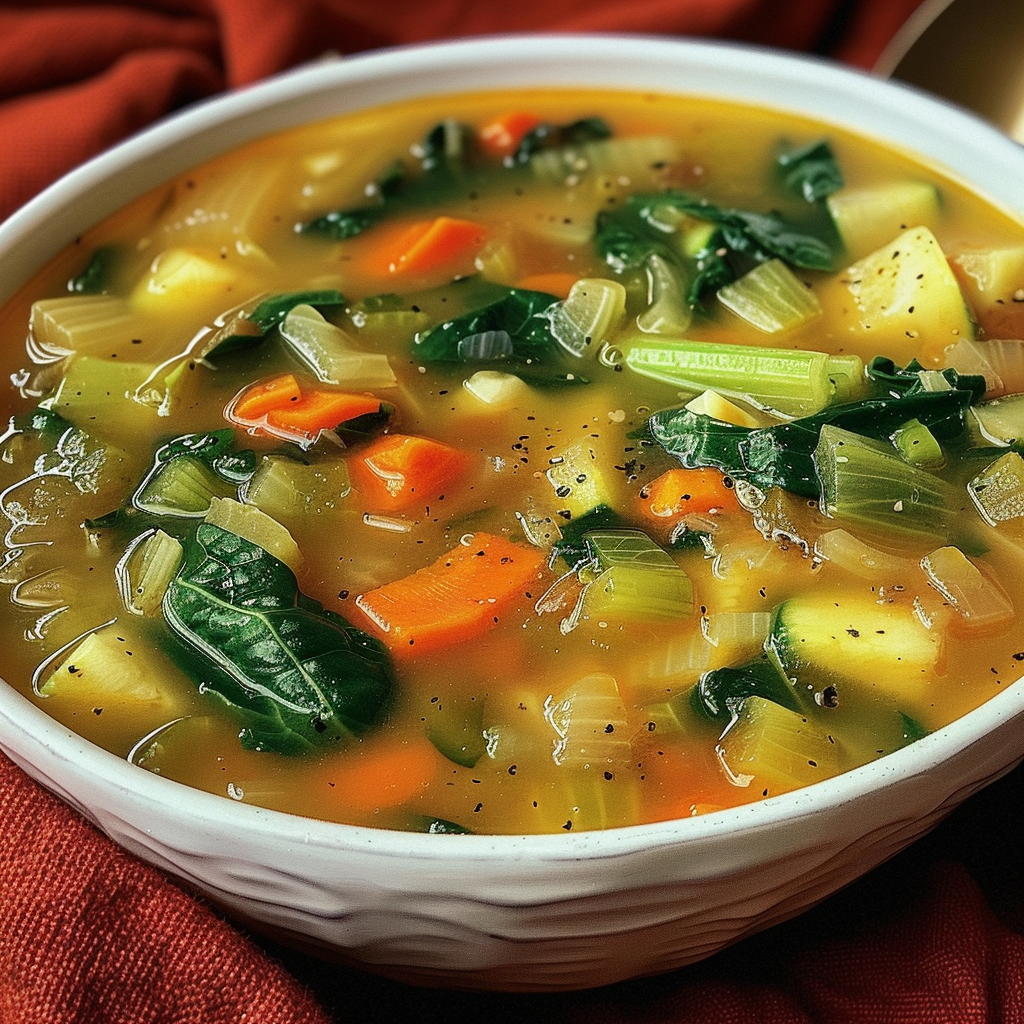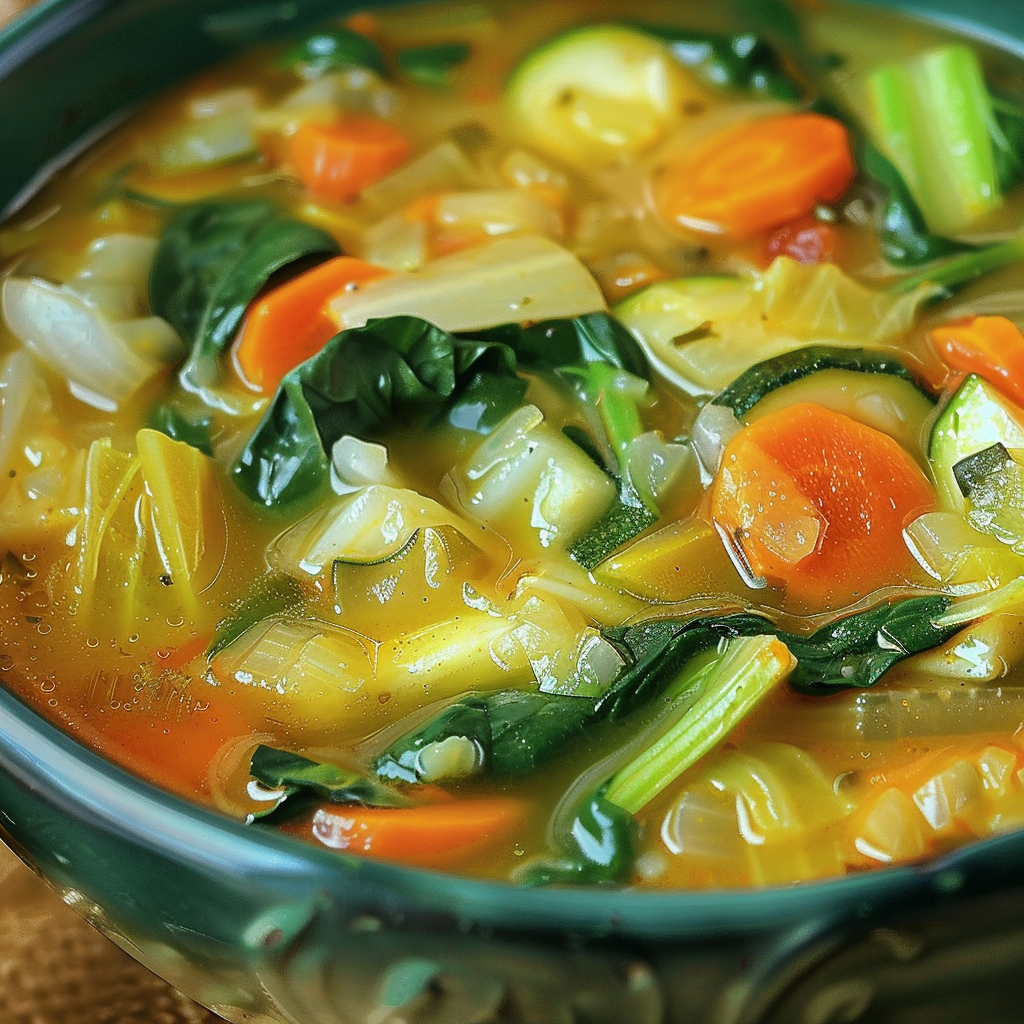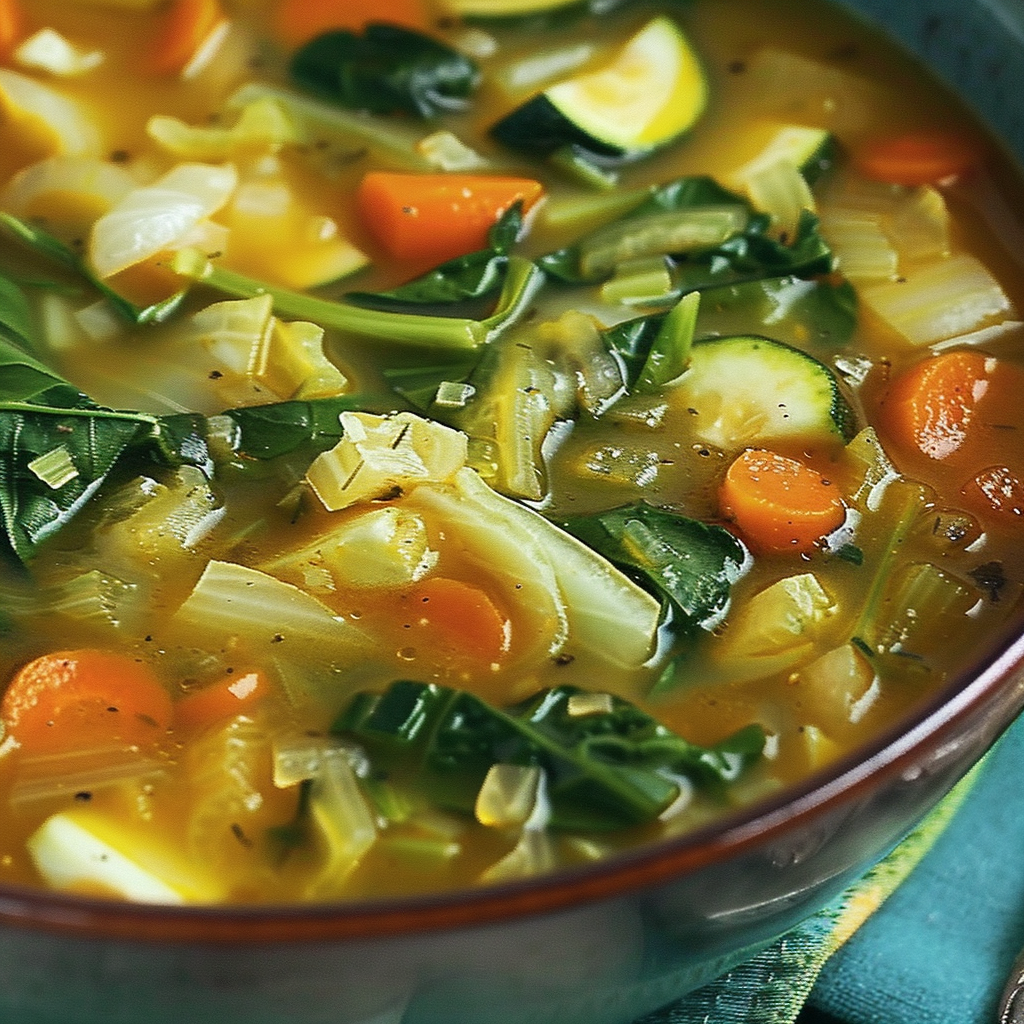Cabbage Soup for Weeknight Dinners
When it comes to easy weeknight dinners, few meals are as comforting, nutritious, and affordable as a hearty bowl of cabbage soup. This timeless recipe has gained popularity not only for its simplicity but also for its incredible ability to adapt to whatever ingredients are already in your fridge or pantry. Whether you’re cooking for a family or preparing individual meals for the week, cabbage soup delivers flavor without fuss.
One of the key reasons why cabbage soup remains a kitchen staple is its versatility. You can keep it vegetarian, add lean proteins like ground beef or chicken, or boost it with grains like barley or brown rice. It’s also a great way to incorporate a range of vegetables, like carrots, celery, and green beans, making it a nutrient-rich option that doesn’t sacrifice taste for health.
Thanks to ingredients like green cabbage, which is loaded with vitamin C, vitamin K, and dietary fiber, this dish supports everything from immune health to digestion. In fact, you can learn more about the nutritional profile of green cabbage and its role in healthy diets through external sources like Wikipedia.
Another reason this soup fits seamlessly into your weeknight meal plan is because it’s ideal for meal prep. Once you’ve made a large batch, it stores well in the fridge or freezer and reheats without losing flavor. Pinterest is a goldmine of inspiration, offering numerous meal prep ideas for cabbage soup that can guide you toward new serving methods or storage strategies.
If you’re looking to rotate between your regular recipes and introduce more budget-friendly and filling options, classic cabbage soup is a must-have in your culinary lineup. Whether you’re trying to reduce food waste, eat healthier, or just find a new comfort food, this soup covers all the bases.

Why Cabbage Soup Is the Ultimate Budget-Friendly Meal
One of the most appealing features of cabbage soup is how it delivers maximum comfort and nutrition while staying incredibly budget-friendly. At a time when grocery prices are on the rise, having a go-to dish made primarily from affordable pantry staples like cabbage, carrots, potatoes, and broth is a smart and satisfying solution for any household.
The main ingredient, green cabbage, is not only inexpensive but also packs a powerful nutritional punch. With high levels of vitamin K, vitamin C, and antioxidants, cabbage offers more than just bulk — it contributes significantly to a healthy, balanced diet. According to Wikipedia’s entry on cabbage, this cruciferous vegetable has been used for centuries in soups and stews across cultures due to its accessibility and health benefits.
Beyond cabbage, the remaining ingredients in a typical cabbage soup — such as onions, garlic, and diced tomatoes — are all low-cost and easy to keep on hand. Even adding a protein like ground beef or beans doesn’t break the bank. The use of low-sodium beef broth, which you can either buy or make from scratch using bones and scraps, adds depth without significant expense. Learn more about how to make or use beef broth effectively in budget cooking.
Meal planning becomes easier when you know that a single pot of soup can stretch into multiple servings. That’s why cabbage soup is perfect for families or individuals aiming to reduce daily cooking time. Large batches can be portioned into individual containers, making it a meal-prepper’s dream. For those looking to spice things up, Pinterest offers plenty of easy cabbage soup variations that keep things fresh while using similar, affordable ingredients.
In addition to its affordability, cabbage soup is also low in calories yet high in fiber, making it both satisfying and supportive of healthy eating habits. It aligns well with diets aimed at weight management or detoxification, though it’s far more balanced and sustainable than the restrictive cabbage soup diet. For those interested, Wikipedia’s overview of the cabbage soup diet gives historical context, though the classic recipe featured here is far more nutritious and satisfying.
Ultimately, choosing cabbage soup means choosing a meal that’s easy on your wallet, nutrient-rich, and adaptable — a rare trifecta in the world of weeknight cooking.
Classic Cabbage Soup Recipe (Featured Recipe)
This classic cabbage soup recipe is the perfect blend of comfort, nutrition, and simplicity. It’s hearty enough for a full meal, yet light enough to be enjoyed any night of the week. Packed with fiber-rich vegetables, a flavorful beef broth base, and lean ground beef, this version is sure to become a regular in your recipe rotation.
Ingredients:
-
2 tablespoons olive oil
-
1 medium onion, chopped
-
2 cloves garlic, minced
-
3 carrots, peeled and sliced
-
3 celery stalks, sliced
-
4 cups chopped green cabbage
-
1 teaspoon dried thyme
-
1 teaspoon dried basil
-
Salt and pepper, to taste
-
6 cups low-sodium beef broth
-
1 can (14.5 oz) diced tomatoes, with juice
-
2 medium potatoes, peeled and diced
-
1 cup green beans, trimmed and cut into 1-inch pieces
-
1 cup corn kernels (fresh or frozen)
-
1 pound ground beef, browned and drained
This wholesome ingredient list features many nutrient-dense components. For example, carrots are rich in beta-carotene and antioxidants, supporting immune health and eye function. You can explore the nutritional value of carrots to understand their benefits in this recipe.
The green beans and corn add texture and subtle sweetness, while the ground beef boosts protein content. If you’re looking for an alternative to beef, ground turkey or plant-based proteins also work well.
Instructions:
-
In a large soup pot, heat olive oil over medium heat.
-
Add the chopped onion, garlic, carrots, and celery. Sauté for 5–7 minutes until vegetables begin to soften.
-
Stir in the chopped cabbage and cook for another 5 minutes, stirring occasionally.
-
Add thyme, basil, salt, and pepper. Mix well to coat the vegetables with seasoning.
-
Pour in the beef broth and diced tomatoes (with juice). Stir thoroughly.
-
Add the diced potatoes, green beans, and corn. Increase the heat to bring the soup to a boil.
-
Once boiling, reduce heat to low, cover, and simmer for 30–40 minutes until vegetables are tender.
-
Stir in the cooked ground beef and let it simmer uncovered for 10 more minutes.
-
Taste and adjust seasoning if needed. Serve hot.
This soup is perfect for making ahead and storing. According to Wikipedia’s food preservation guide, properly cooled and stored soups can last up to five days in the refrigerator or several months in the freezer.
Looking for serving inspiration? Check out Pinterest boards featuring comfort food soups to pair this dish with homemade bread or creative sides.
Optional Swaps & Tips:
-
Use vegetable broth for a vegetarian version
-
Swap potatoes for cauliflower to make it keto-friendly
-
Add cooked brown rice or lentils for a fiber boost
-
Make it in an Instant Pot or slow cooker for added convenience
This classic version strikes the right balance between flavor, texture, and nutrition. With minimal effort, it delivers maximum results — a reliable favorite for anyone craving a warm, satisfying meal on a busy night.
Variations on Classic Cabbage Soup
The beauty of cabbage soup lies in its flexibility. While the classic version is a weeknight favorite, you can easily tailor it to suit different dietary needs or flavor profiles. From vegetarian options to spicy versions, these variations ensure that cabbage soup never gets boring. Plus, most versions use the same core ingredients, so there’s no need to overhaul your grocery list.
Vegetarian Cabbage Soup
For a meat-free meal that’s still packed with flavor, simply skip the ground beef and opt for extra vegetables or legumes. Using a vegetable broth base keeps it light while still offering plenty of taste. Add chickpeas or white beans for a protein boost, or toss in some zucchini and bell peppers for added color and nutrients.
Need ideas for plant-based versions? Pinterest offers an array of vegetarian cabbage soup recipes that highlight spices, herbs, and seasonal produce.
Keto-Friendly Version
Looking for a low-carb twist? Skip the potatoes and corn, which are higher in starch, and substitute them with cauliflower, zucchini, or spinach. Use a rich bone broth for depth and collagen benefits. Incorporating healthy fats like olive oil or a spoonful of pesto adds flavor while keeping it keto-compliant.
Spicy Cabbage Soup
Turn up the heat by adding crushed red pepper flakes, sriracha, or diced jalapeños. For an even bolder kick, try incorporating a bit of smoked paprika or a dash of cayenne. A spicy version works great with Italian sausage or chorizo, giving the soup a smoky depth and satisfying warmth.
Cabbage Soup with Sausage or Chicken
If you’re out of ground beef or simply want to switch things up, sausage and chicken both make excellent substitutes. For sausage, slice and sauté it with the aromatics before adding the broth. With chicken, use shredded rotisserie meat or leftover roast chicken for a quicker option. These swaps are ideal for anyone trying to use up what’s already in the fridge — keeping your meal budget-friendly and reducing food waste.
Extra Tips for Customizing
-
Add cooked rice, barley, or quinoa for more texture and fiber.
-
Use fire-roasted diced tomatoes for a smoky flavor.
-
Garnish with fresh herbs like parsley or dill just before serving.
With so many ways to reinvent this simple dish, cabbage soup becomes more than a recipe — it becomes a foundation for creative cooking. Whether you’re looking for a comforting classic or something bold and modern, these variations will keep your soup pot exciting all season long.

Nutritional Benefits of Cabbage and Soup Ingredients
Cabbage soup isn’t just affordable and comforting — it’s also loaded with nutritional value that supports overall health. Each ingredient plays a role in making this meal well-rounded, hearty, and nutrient-dense, making it a smart choice for anyone aiming to eat healthier without sacrificing flavor.
Cabbage: A Nutritional Powerhouse
Cabbage is low in calories yet rich in vitamins and minerals. It’s an excellent source of:
-
Vitamin C, which supports immune function
-
Vitamin K, essential for blood clotting and bone health
-
Fiber, which promotes digestion and satiety
-
Antioxidants, such as polyphenols and sulfur compounds
This cruciferous vegetable has long been associated with reduced inflammation and even cancer-fighting properties. For a more detailed breakdown, see the green cabbage nutrition profile on Wikipedia.
Onion and Garlic: Flavor and Function
Both onion and garlic are foundational to the soup’s flavor but also deliver health perks. Garlic, in particular, contains allicin, a compound known for its antibacterial and anti-inflammatory benefits. For more context, the health benefits of garlic are well documented and worth exploring.
Carrots and Celery: Crunch with Benefits
Carrots are loaded with beta-carotene, which converts into vitamin A — essential for eye health and immune function. Carrot nutritional value includes a spectrum of antioxidants and fiber, making them a valuable part of this dish. Celery, while low in calories, adds important minerals like potassium and contributes to hydration and electrolyte balance.
Broth and Tomatoes: Base Building Blocks
A good-quality low-sodium beef broth adds depth to the soup while keeping sodium levels manageable. Broth also provides collagen and amino acids, especially if it’s homemade. Learn more about beef broth and how it contributes to nutritional value. Diced tomatoes, meanwhile, offer lycopene, an antioxidant known for heart health and anti-cancer properties.
Potatoes, Corn, and Beans: Energy and Fiber
Though starchy, potatoes offer complex carbohydrates, vitamin B6, and potassium. Corn adds natural sweetness, fiber, and antioxidants like lutein, beneficial for eye health. Adding green beans contributes even more fiber, along with vitamin K, vitamin C, and folate.
For those customizing their soup, adding beans like kidney or cannellini beans can increase plant-based protein and fiber. These tweaks are not only filling but also nutritionally enriching.
Protein Power: Ground Beef
Including lean ground beef enhances the soup’s protein content, which is vital for muscle repair, immune support, and satiety. When using lean cuts (90% or higher), you get the benefits of iron, B12, and zinc without excessive saturated fat.
Alternatively, using chicken or turkey provides similar benefits with fewer calories and less fat, making it easier to adapt the soup to individual dietary needs.
Balanced, Not Boring
This soup is a balanced meal — combining protein, fiber, healthy fats, and micronutrients. That’s why it’s not just great for comfort but also ideal for wellness. Whether you’re aiming to boost your vegetable intake, support gut health, or just maintain energy throughout the day, cabbage soup delivers in every bowl.
And if you’re looking for more ideas to balance your meals while keeping them delicious, explore some comfort food soups that are both hearty and health-forward.
How to Store and Reheat Cabbage Soup Properly
One of the many reasons why cabbage soup is a weeknight hero is its ability to store and reheat beautifully. Whether you’re meal prepping for the week or saving leftovers, knowing how to store this soup correctly ensures you maintain both its flavor and nutritional value.
Refrigerator Storage
Once the soup has cooled to room temperature, transfer it into airtight containers. Store in the refrigerator for up to 5 days. Using glass containers can help retain freshness and make it easier to reheat.
To avoid sogginess or overcooked veggies, only reheat the portion you plan to eat. This keeps the rest of the batch intact and preserves the soup’s texture.
Freezing Tips
Cabbage soup is an excellent candidate for freezing. Let the soup cool completely before dividing it into freezer-safe containers or heavy-duty freezer bags. Leave a bit of space at the top for expansion.
Label each container with the date. Frozen cabbage soup will keep for up to 3 months. To thaw, transfer to the fridge overnight or use the defrost setting on your microwave.
You can explore the science behind soup preservation to better understand how to extend its shelf life without compromising quality.
Reheating Methods
-
Stovetop: Reheat in a pot over medium heat, stirring occasionally until hot.
-
Microwave: Heat in a microwave-safe container in 60–90 second increments, stirring between each interval.
-
Slow Cooker: For larger portions, you can reheat in a slow cooker on low for 1–2 hours.
Whether you’re reheating for lunch or dinner, the flavors often deepen after a day or two, making leftovers just as satisfying — if not more — than the first serving.
Best Sides to Serve with Cabbage Soup
While cabbage soup stands well on its own, pairing it with the right side dish can elevate the meal from simple to satisfying. Here are some easy and complementary ideas:
-
Crusty Bread or Dinner Rolls: Perfect for soaking up the flavorful broth.
-
Grilled Cheese Sandwich: Adds richness and pairs well with the savory soup base.
-
Side Salad: A light green salad with a tangy vinaigrette balances the hearty nature of the soup.
-
Roasted Potatoes: Serve alongside or add directly to the soup for a heartier meal.
-
Garlic Knots or Breadsticks: Ideal for dipping and adding an extra layer of flavor.
Looking for more ideas to round out your meal? Check out Pinterest boards for comfort food soups to find creative and cozy combinations.
Creative Ways to Use Leftover Cabbage Soup
Leftovers don’t have to be repetitive — especially when it comes to cabbage soup. With a few simple adjustments, you can turn yesterday’s dinner into today’s entirely new meal.
-
Create a Stew: Thicken the soup with a bit of tomato paste or flour and serve over rice or quinoa.
-
Turn It Into a Pasta Sauce: Let the soup reduce and toss it with cooked pasta for a rustic sauce.
-
Stuff a Baked Potato: Use the soup as a hearty topping for a baked potato, adding cheese or sour cream for extra flavor.
-
Make a Cabbage Casserole: Mix leftover soup with cooked rice or lentils, top with breadcrumbs and cheese, then bake.
-
Blend Into a Creamy Soup: Use an immersion blender to puree the soup, adding a splash of cream or plant milk for a silky texture.
The adaptability of this recipe makes it easy to reimagine into new and satisfying meals throughout the week, minimizing waste while keeping your dinners interesting.
Cabbage Soup for Weight Loss & Detox Diets
While many associate cabbage soup with the infamous “cabbage soup diet,” this version is a much healthier and more sustainable alternative. Instead of following extreme short-term plans, this soup can be part of a balanced, long-term eating strategy.
What Is the Cabbage Soup Diet?
The cabbage soup diet is a fad diet that involves eating large quantities of low-calorie cabbage soup for seven days. While it may result in short-term weight loss, it often lacks nutritional balance and is not recommended for long-term health.
Why This Version Is Better
This recipe:
-
Includes lean protein, which supports muscle maintenance and satiety
-
Uses a variety of vegetables, adding nutrients and fiber
-
Can be paired with whole grains or healthy fats for a complete meal
-
Avoids the restrictive nature of detox diets while still being light and filling
By enjoying cabbage soup as part of a diverse diet, you can take advantage of its low-calorie, high-fiber, and anti-inflammatory benefits without falling into unsustainable habits.
Looking for more ways to boost your meals? Browse meal prep cabbage soup ideas to plan nutritious lunches and dinners for the week ahead.

Frequently Asked Questions (FAQs)
Is cabbage soup actually healthy?
Yes, when made with a variety of vegetables and lean protein, cabbage soup is low in calories, high in fiber, and rich in essential nutrients like vitamin C, potassium, and antioxidants.
Can you freeze homemade cabbage soup?
Absolutely. Cabbage soup freezes well for up to 3 months. Just let it cool completely, portion into freezer-safe containers, and label before storing.
What type of cabbage is best for soup?
Green cabbage is the most common and works best due to its mild flavor and texture. However, Savoy cabbage or even Napa cabbage can be used for variations.
How long does cabbage soup last in the fridge?
Properly stored in an airtight container, it can last in the refrigerator for up to 5 days. Reheat only what you plan to eat to preserve texture and flavor.
Can I make cabbage soup in a slow cooker or Instant Pot?
Yes, this recipe is highly adaptable. In a slow cooker, cook on low for 6–8 hours. In an Instant Pot, use the sauté function for aromatics, then pressure cook for about 15 minutes.
The Best Cabbage Soup Recipes for Easy Weeknight Dinners
This classic cabbage soup recipe is the ultimate comfort food for busy weeknights. Loaded with hearty vegetables, lean ground beef, and a flavorful beef broth base, it’s a one-pot wonder that’s satisfying, nutritious, and easy to make. Whether you’re cooking for the family or prepping lunches for the week, this soup is the perfect go-to dish. Plus, it’s highly adaptable — switch up the veggies, use different proteins, or make it vegetarian. Serve it with crusty bread or a green salad for a complete meal.
- Author: Clara
Ingredients
- 2 tablespoons olive oil
- 1 medium onion, chopped
- 2 cloves garlic, minced
- 3 carrots, peeled and sliced
- 3 celery stalks, sliced
- 4 cups chopped green cabbage
- 1 teaspoon dried thyme
- 1 teaspoon dried basil
- Salt and pepper, to taste
- 6 cups low-sodium beef broth
- 1 can (14.5 oz) diced tomatoes, with juice
- 2 medium potatoes, peeled and diced
- 1 cup green beans, trimmed and cut into 1-inch pieces
- 1 cup corn kernels (fresh or frozen)
- 1 pound ground beef, browned and drained
Instructions
Preheat a large soup pot over medium heat and add olive oil.
Sauté the chopped onion, garlic, carrots, and celery until they begin to soften.
Add the chopped cabbage and cook for a few minutes, stirring occasionally.
Sprinkle in the thyme, basil, salt, and pepper. Mix well.
Pour in the beef broth and diced tomatoes with their juice. Stir to combine.
Add the diced potatoes, green beans, and corn. Stir and bring the mixture to a boil.
Reduce the heat to low, cover the pot, and let the soup simmer for about 30–40 minutes, or until vegetables are tender.
Stir in the cooked ground beef and let it simmer for an additional 10 minutes.
Taste and adjust seasoning if needed. Serve hot.
Notes
-
Make it vegetarian by substituting beef broth with vegetable broth and omitting the ground beef.
-
Add heat by including crushed red pepper flakes or a dash of hot sauce.
-
Use leftovers creatively in stews, casseroles, or as baked potato toppings.
-
Double the batch and freeze individual portions for quick, healthy meals.
-
Boost protein by adding beans, lentils, or swapping beef for chicken or turkey.
-
Garnish with fresh herbs like parsley or dill for added flavor and color.




